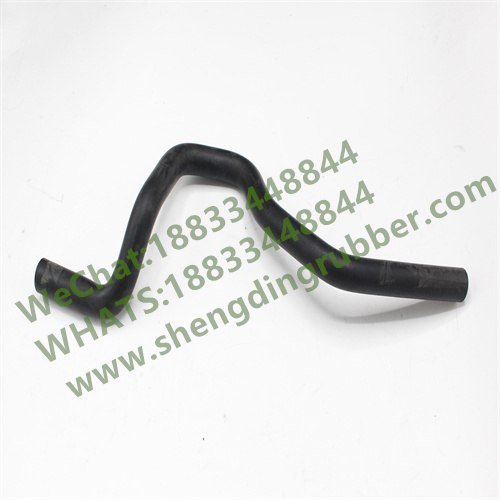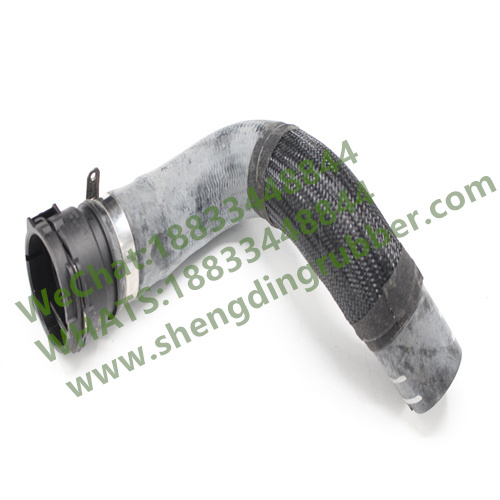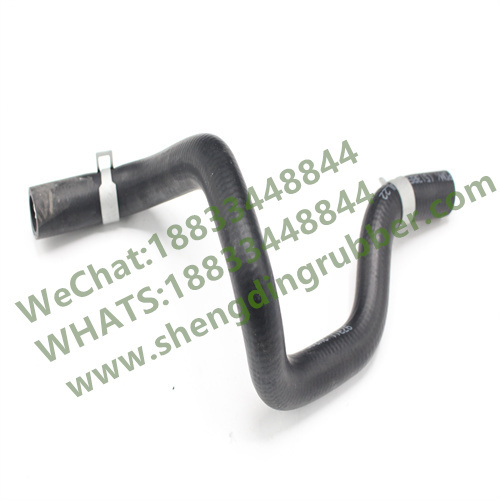Choosing Between Silicone and Rubber Hoses: Which is Right for Your Vehicle?
Release Time:
Jul 17,2025
Choosing Between Silicone and Rubber Hoses: Which is Right for Your Vehicle? Table of Contents Introduction to Automotive Hoses Importance of Selecting the Right Hose Understanding Silicone Hoses Advantages of Silicone Hoses Disadvantages of Silicone Hoses Understanding Rubber Hoses Advantages of Rubber Hoses
Choosing Between Silicone and Rubber Hoses: Which is Right for Your Vehicle?
Table of Contents
- Introduction to Automotive Hoses
- Importance of Selecting the Right Hose
- Understanding Silicone Hoses
- Understanding Rubber Hoses
- Silicone vs. Rubber: A Direct Comparison
- Best Applications for Silicone and Rubber Hoses
- Maintenance Tips for Automotive Hoses
- Conclusion
- Frequently Asked Questions
Introduction to Automotive Hoses
Automobiles are complex machines that rely on a variety of components working together seamlessly. Among these components, hoses play a pivotal role in fluid transfer, whether it be coolant, oil, or air. When it comes to selecting the right hose for your vehicle, two primary materials often come into play: **silicone** and **rubber**. Understanding the nuances between these materials can significantly impact your vehicle’s performance, efficiency, and longevity.
Importance of Selecting the Right Hose
Selecting the appropriate hose for your vehicle is not merely a matter of preference; it directly influences **performance**, **safety**, and **cost-effectiveness**. The right hose ensures proper fluid transfer, minimizes leaks, and withstands the demands of your specific application. Therefore, understanding the differences between silicone and rubber hoses is essential for making an informed choice.
Understanding Silicone Hoses
Silicone hoses have garnered attention for their unique properties and applications in various automotive settings. Made from a synthetic polymer, silicone offers several advantages that set it apart from traditional rubber hoses.
Advantages of Silicone Hoses
1. **High Temperature Resistance**: Silicone hoses can withstand extreme temperatures, often ranging from -50 to 200 degrees Celsius. This makes them ideal for high-performance applications.
2. **Chemical Resistance**: Silicone is resistant to many chemicals and fluids, ensuring durability in environments exposed to oils, coolants, and other automotive fluids.
3. **Flexibility**: Silicone hoses maintain flexibility even at varying temperatures, making installation easier and reducing stress on connection points.
4. **Longevity**: Due to their resistance to aging and degradation, silicone hoses have a longer lifespan, which can lead to lower maintenance costs over time.
5. **Color Variety**: Silicone hoses come in various colors, providing aesthetic options for those who want to customize their engine bay.
Disadvantages of Silicone Hoses
1. **Cost**: Silicone hoses typically come at a higher price point compared to rubber hoses, which can be a consideration for budget-conscious consumers.
2. **Less Rigid Under Pressure**: Silicone can sometimes be less rigid than rubber under pressure, which may not suit all applications where firm structural integrity is required.
Understanding Rubber Hoses
Rubber hoses, often made from natural or synthetic rubber, are the traditional option in automotive applications. They have been the standard choice for many years, thanks to their various beneficial properties.
Advantages of Rubber Hoses
1. **Affordability**: Rubber hoses are generally less expensive than silicone hoses, making them a cost-effective option for many vehicle owners.
2. **Sturdiness**: Rubber hoses offer a certain level of rigidity, making them suitable for high-pressure applications where structural integrity is crucial.
3. **Widely Available**: Due to their long-standing use, rubber hoses are widely available in various shapes and sizes, making them easy to source.
Disadvantages of Rubber Hoses
1. **Temperature Limitations**: Rubber hoses can typically withstand lower temperatures than silicone hoses, often failing at temperatures above 120 degrees Celsius.
2. **Chemical Sensitivity**: Rubber is more susceptible to degradation from certain chemicals and fluids, which can lead to leaks and failures over time.
3. **Shorter Lifespan**: Rubber hoses generally have a shorter lifespan compared to silicone hoses, requiring more frequent replacements.
Silicone vs. Rubber: A Direct Comparison
When it comes to choosing between silicone and rubber hoses, several factors come into play that are essential for making the right decision.
Temperature Resistance
Silicone hoses win hands down in terms of temperature resistance, functioning effectively in both extreme heat and cold environments. Rubber hoses, on the other hand, have a limited range, making them less suitable for high-performance applications.
Chemical Resistance
Silicone hoses excel in environments where exposure to chemicals is a concern. Rubber hoses can degrade when exposed to certain chemicals, impacting their longevity and performance.
Durability and Longevity
While both hoses can serve well in appropriate applications, silicone hoses generally outlast rubber hoses, making them a better long-term investment for vehicles that require frequent use under extreme conditions.
Cost Considerations
Rubber hoses are the more economical choice upfront, but when considering the lifespan and durability of silicone hoses, the latter may prove to be the more financially prudent option in the long run.
Best Applications for Silicone and Rubber Hoses
Choosing the right hose hinges not only on the material but also on the application. For instance:
- **Silicone Hoses**: Ideal for high-performance vehicles, racing applications, and situations that involve significant temperature fluctuations.
- **Rubber Hoses**: Perfect for standard vehicles and everyday applications where cost is a priority and extreme conditions are less of a concern.
Maintenance Tips for Automotive Hoses
Regardless of the type of hose you choose, proper maintenance is crucial for ensuring optimal performance. Here are some tips:
1. **Regular Inspections**: Check hoses for cracks, leaks, or bulges regularly. Early detection can prevent costly repairs.
2. **Keep Clean**: Ensure that hoses are free from debris and contaminants that could cause deterioration over time.
3. **Replace as Needed**: Don’t wait for a hose to fail before replacing it. Regularly scheduled replacements can save you from unexpected breakdowns.
Conclusion
When deciding between silicone and rubber hoses, it is essential to consider your specific vehicle needs and application. Silicone hoses offer superior temperature and chemical resistance, making them ideal for high-performance applications, while rubber hoses provide a more affordable and sturdy option for everyday use. By understanding the strengths and weaknesses of each material, you can make an informed decision that enhances your vehicle's performance and longevity.
Frequently Asked Questions
1. How do I know if I need silicone or rubber hoses for my vehicle?
Assess your vehicle’s performance requirements, temperature ranges, and the fluids involved in your application.
2. Can I use silicone hoses for all applications?
While silicone hoses excel in many scenarios, they may not be ideal for applications requiring rigidity under high pressure.
3. Are silicone hoses safer than rubber hoses?
Silicone hoses tend to be more resilient to temperature changes and chemical exposure, making them safer in extreme conditions.
4. How often should I replace my hoses?
It is advisable to inspect hoses regularly and replace them based on wear and tear, typically every 3-5 years for rubber hoses.
5. Is it worth the investment to switch to silicone hoses?
If your vehicle experiences extreme conditions, investing in silicone hoses can lead to fewer replacements and better performance in the long run.
Key words:
What Else Might You Learn?







